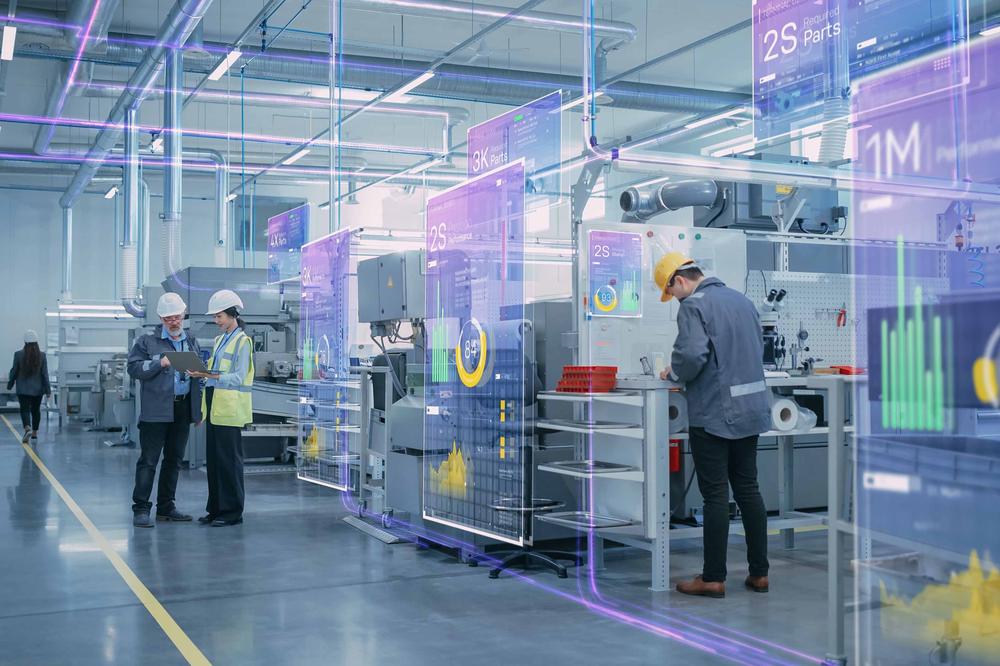
The B2B platform for the best purchasing descision. Identify and compare relevant B2B manufacturers, suppliers and retailers
Close
Filter
Result configuration
Continents
Select continent
Locations
Result types
Company type
Select company type
Industries
Select industry
Company status
Select company status preset
Number of employees
Min.
Max.
Founding year

NEUROSPACE GmbH
Berlin, Germany
A
1-10 Employees
2020
Key takeaway
The company, NEUROSPACE, is focused on advancing space exploration through innovative technologies, including their HiveR platform, which offers a modular and flexible solution for moon rovers. This cutting-edge approach may be relevant to the field of swarm robotics, particularly in the context of autonomous exploration and payload delivery.
Reference
Product
Technology | NEUROSPACE

Clearbot
-
- Employees
-
Key takeaway
Clearbot is focused on developing autonomous swarm robotics systems designed to efficiently clean waterways and oceans. Their innovative approach combines technology with environmental sustainability, making it a key player in the effort to remove plastic and other debris from marine environments.
Reference
Core business
Home | Clearbot
A autonomous swarm robotics system to clean our oceans
Marvelmind Robotics
Tallinn, Estonia
A
11-50 Employees
2005
Key takeaway
Marvelmind Robotics specializes in autonomous robotics, offering solutions for logistics, factory automation, and research. Their innovations include a precise indoor positioning system and an autonomous mobile robot, Boxie, designed for intra-logistics and educational purposes.
Reference
Product
Autonomous robot Boxie - Marvelmind Robotics
Autonomous mobile robot for intra-logistics, manufacturing, research and education. Ready to use. Expandable. Open API. Multiple options
Looking for more accurate results?
Find the right companies for free by entering your custom query!
25M+ companies
250M+ products
Free to use
Track32
Wageningen, Netherlands
A
1-10 Employees
2018
Key takeaway
The company, Track32, has experience in developing an egg collection robot, which highlights their expertise in automation and robotics within agricultural settings. Their commitment to innovative, AI-based solutions enhances efficiency and sustainability in various sectors, aligning with the principles of swarm robotics.
Reference
Product
Egg collection robot – Track32
From 2014 to 2017, we contributed to the development of an egg collection robot (PoultryBot – currently being developed further at Livestock Robotics). Since battery caging systems have been banned, so-called floor eggs have to be collected by hand, until...
OffWorld
Pasadena, United States
B
11-50 Employees
2016
Key takeaway
OffWorld is revolutionizing mining and resource extraction through the use of swarms of smart industrial robots. Their innovative approach leverages collective intelligence and AI-powered platforms to enhance efficiency and safety in operations, both on Earth and in space.
Reference
Core business
OffWorld
Unmand
Melbourne, Australia
A
1-10 Employees
2019
Key takeaway
Unmand offers a comprehensive Robotic Process Automation (RPA) platform that enables businesses to automate complex workflows, enhancing productivity and efficiency. Their solution integrates seamlessly with existing systems, providing tools to automate time-consuming processes and improve overall operational performance.
Reference
Product
Unmand Swarm | End to end robotic process automation software | Unmand
Full lifecycle software robotics that allow you to automate any workflow. Boost productivity, customer experience and employee job satisfaction.
TU Delft Robotics Institute
Delft, Netherlands
A
251-500 Employees
-
Key takeaway
The company focuses on developing robust and efficient algorithms for motion prediction and computer vision, enabling robots to effectively perform tasks alongside humans in production environments.
Reference
Core business
TU Delft Robotics Institute - RoboHouse

Pololu Laser Cutting
Las Vegas, United States
B
1-10 Employees
-
Key takeaway
The Pololu 3pi+ 2040 Robot - Turtle Edition is designed for applications where slow, controlled speed is essential, making it ideal for coordinated swarm robotics. Its features, including dual quadrature encoders and various sensors, enhance its capability for closed-loop control and navigation.
Reference
Product
Pololu - 3pi+ 2040 Robot - Turtle Edition (75:1 LP Motors), Assembled
The Pololu 3pi+ 2040 robot is a palm-sized, high-performance mobile platform based on the Raspberry Pi RP2040 MCU. Its many features include dual quadrature encoders for closed-loop speed or position control, line sensors, front bump sensors, a full IMU (3-axis accelerometer, magnetometer, and gyro), six RGB LEDs, and a graphical OLED display. This Turtle Edition version is assembled with 75:1 LP 6V Micro Metal Gearmotors, which allow for longer battery life than the other editions. The maximum robot speed is approximately 0.4 m/s, making it well suited for applications where slow, controlled speed is important, such as coordinated swarm robots and introductory robotics courses.
Technologies which have been searched by others and may be interesting for you:
Swarm robotics refers to the field of robotics that focuses on the coordination of multiple robots to perform tasks collectively. Inspired by social organisms, such as ants or bees, these systems utilize decentralized control mechanisms, enabling individual robots to communicate and collaborate effectively. This approach enhances efficiency and adaptability, allowing the swarm to tackle complex problems that are challenging for a single robot to manage. The technology leverages algorithms that mimic natural swarm behaviors, such as flocking or foraging. As a result, swarm robotics can be applied in various domains, including search and rescue missions, environmental monitoring, and agricultural automation, where scalability and robustness are critical. By harnessing the collective intelligence of multiple units, swarm robotics offers innovative solutions to real-world challenges.
Swarm robotics operates on the principle of decentralized control, where multiple robots collaborate to achieve common goals. Each robot in a swarm typically follows simple rules and interacts with its neighbors, allowing for complex behaviors to emerge from these interactions. The robots communicate with one another, sharing information about their environment and task progress, which enables them to adapt to changes and coordinate their actions effectively. This approach mimics the behavior of social insects, like ants or bees, where individual actions contribute to the efficiency and robustness of the entire group. By leveraging local information and interactions, swarm robotics can perform tasks such as exploration, mapping, search and rescue, and environmental monitoring with high efficiency and resilience to failure.
Swarm robotics is a field that leverages the collective behavior of multiple robots to accomplish tasks efficiently. One significant application is in agriculture, where swarms can monitor crops and optimize pesticide usage, enhancing yield while minimizing chemical use. Another vital area is search and rescue operations, where robotic swarms can cover large areas quickly, locating victims in disaster-stricken environments. Their ability to collaborate and communicate allows for efficient data gathering and decision-making, making them invaluable in emergency scenarios.
1. Scalability
Swarm robotics systems can easily scale up or down based on task requirements. This flexibility allows for the addition or removal of robots without disrupting the overall operation. As tasks become more complex, more robots can be deployed, enabling efficient handling of larger workloads.
2. Robustness
The decentralized nature of swarm robotics enhances robustness. If one or several robots fail, the remaining units can continue functioning, ensuring the system remains operational. This redundancy contributes to a higher level of reliability in various environments.
3. Efficiency
Swarm robotics can significantly improve efficiency in task execution. With multiple robots working simultaneously on different aspects of a task, the overall time taken to complete projects is reduced. This collaborative approach allows for optimized resource utilization.
4. Adaptability
These systems can adapt to dynamic environments. Swarm robots can quickly reorganize and adjust their strategies based on real-time feedback, making them effective in unpredictable scenarios. This adaptability is crucial for applications ranging from search and rescue missions to agricultural monitoring.
Swarm robotics faces several challenges that can impact the effectiveness and reliability of the systems. One significant issue is communication, as robots in a swarm must efficiently exchange information to coordinate their actions. Any disruption in communication can lead to misalignment in tasks and reduce overall performance. Another challenge is scalability. As the number of robots increases, maintaining efficient coordination and control becomes more complex. This can result in increased computational demands and potential performance bottlenecks. Additionally, ensuring robustness against environmental changes or failures in individual robots is crucial. A single robot's failure should not compromise the entire swarm's mission, necessitating effective fault tolerance mechanisms.
Some interesting numbers and facts about your company results for Swarm Robotics
| Country with most fitting companies | Netherlands |
| Amount of fitting manufacturers | 5 |
| Amount of suitable service providers | 3 |
| Average amount of employees | 11-50 |
| Oldest suiting company | 2005 |
| Youngest suiting company | 2020 |
20%
40%
60%
80%
Some interesting questions that has been asked about the results you have just received for Swarm Robotics
What are related technologies to Swarm Robotics?
Based on our calculations related technologies to Swarm Robotics are Big Data, E-Health, Retail Tech, Artificial Intelligence & Machine Learning, E-Commerce
Which industries are mostly working on Swarm Robotics?
The most represented industries which are working in Swarm Robotics are IT, Software and Services, Automation, Aviation and Aerospace, Mining, Other
How does ensun find these Swarm Robotics Companies?
ensun uses an advanced search and ranking system capable of sifting through millions of companies and hundreds of millions of products and services to identify suitable matches. This is achieved by leveraging cutting-edge technologies, including Artificial Intelligence.